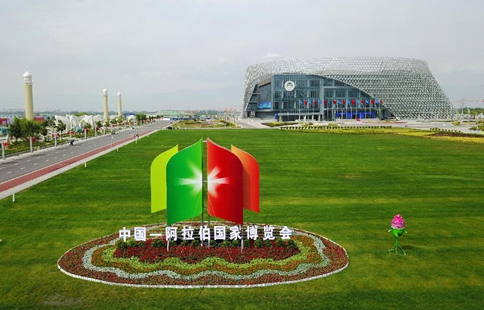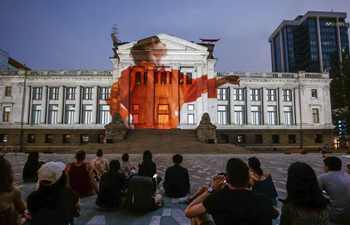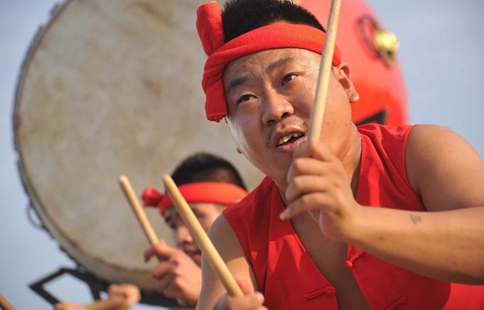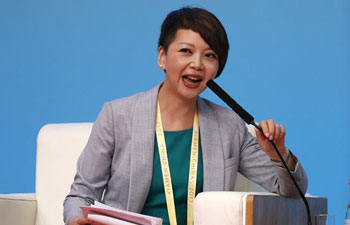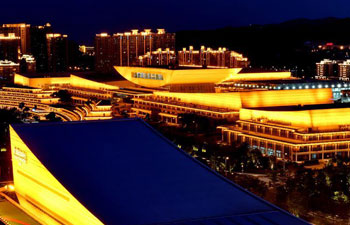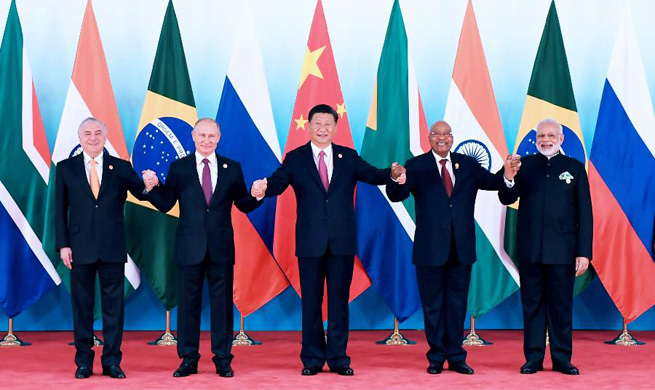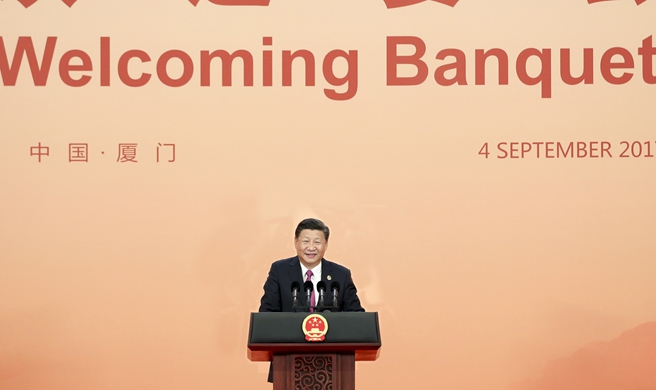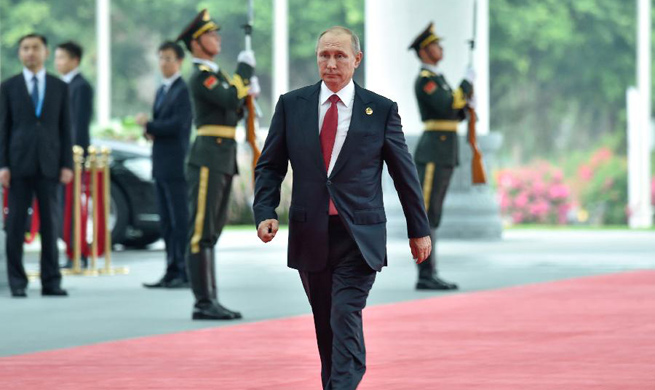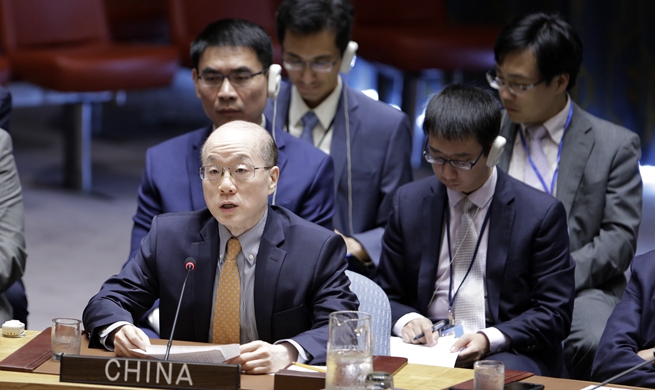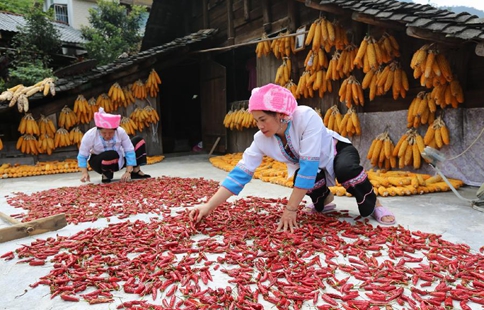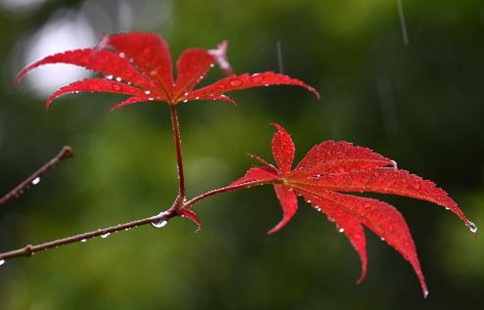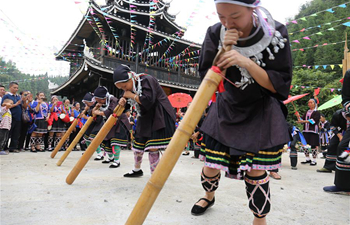by Yoo Seungki
SEOUL, Sept. 5 (Xinhua) -- A South Korean peace activist, who has fought against the deployment of the U.S. Terminal High Altitude Area Defense (THAAD), demanded the U.S. missile shield withdrawal from her home country to probe illegalities in the decision-making process and ensure a procedural legitimacy.
"I oppose THAAD from various perspectives," said Park Jung Eun, deputy secretary general of the liberal civic group People's Solidarity for Participatory Democracy (PSPD), in a recent interview with Xinhua.
The PSPD has stood at the forefront of the anti-THAAD protest rally since the deployment decision was announced in July last year. PSPD and other peace activists helped residents fight against the U.S. missile defense system.
A part of the THAAD battery, including two mobile launchers, was transported in the middle of night on April 26 to a former golf course in Seongju county, North Gyeongsang province, which borders the Gimcheon city.
On Monday, the environment ministry granted a conditional approval to a small-scale assessment of environmental impact on the THAAD site, which was launched from late last year under the presidency of Park Geun-hye who was impeached and stood trial for corruption charges.
The ministry said a potential environmental damage from the THAAD's X-band radar, which is known to emit super microwave detrimental to human body and environment, was slight, but residents believed that it was undervalued as the measurement was conducted when the radar was not in a full operation.
The defense ministry said it would permit the U.S. forces to build facilities inside the golf course for the temporary operation of the already deployed THAAD elements.
The green light to the small-scale green audit, though conditions are attached such as the regular measurement of electromagnetic wave from the THAAD site, could trigger attempt to deploy four more THAAD launchers.
South Korean President Moon Jae-in ordered the temporary installation of the remaining THAAD launchers, though his office said a final decision on the U.S. anti-missile system would be made after a general green audit ends. The general audit could take six to 12 months to complete.
"The small-size green audit was adopted to avoid an appropriate process. It omitted all the right procedures," said the PSPD deputy chief who described the small-scale environmental evaluation as "illegal."
The South Korean military won the former golf course of about 1.48 million square meters in February, but 328,799 square meters of land was initially provided to the U.S. Forces Korea (USFK) that will operate the U.S. missile shield in South Korea.
It was denounced as a mean trick to avoid a full-scale green audit as the military land provision of less than 330,000 square meters only requires the small-scale evaluation. On his campaign trail, President Moon also pointed out the procedural illegitimacy.
South Korea had allegedly planned to offer around 700,000 square meters of land for the THAAD deployment. The land provision was divided into two phases to shun the large-scale evaluation.
Residents and peace activists have demanded a "strategic" green audit, which requires the THAAD removal and the feasibility study on the deployment as well as explanation sessions for residents. And then, a general green audit is allowed to kick off.
"The Moon Jae-in government ordered an investigation into why the small-size green audit was adopted under the previous government, but it decided on the further deployment even with the small-scale one," said Park, the PSPD deputy head.
Park demanded a probe into illegalities possibly committed during the process of the THAAD deployment decision as the April 26 installation of THAAD elements was conducted when there was no president who gives a final order. At the time, former President Park was impeached and taken into custody.
OPPOSING THAAD FOR MULTIPLE REASONS
The peace activist has fought against the U.S. missile shield for multiple reasons. From the military perspective, she said, "THAAD has nothing to do" when the DPRK attacks South Kore with missiles.
President Moon ordered the installation of four more launchers following the DPRK's test in July of what it claimed was an intercontinental ballistic missile (ICBM), called Hwasong-14. The DPRK's ICBM is not a direct threat to South Korea as it refers to a missile with a range of at least 5,500 km.
THAAD is designed to intercept incoming missiles at an altitude of 40-150 km, but DPRK missiles and artillery shells targeting South Korea fly at an altitude of less than 40 km.
"Militarily speaking, the THAAD deployment indicates (South) Korea becoming part of the U.S. missile defense (MD) program as THAAD is part of the U.S. MD system," said the PSPD deputy chief.
With the THAAD deployment, Park said, South Korea will become a U.S. outpost to surveil China, which she cannot consent to.
Neighboring countries, including China and Russia, have strongly opposed the THAAD in South Korea as its radar can peer deep into their territories, breaking strategic balance in the region.
From the diplomatic perspective, the activist said, the THAAD deployment would only increase conflict with China as the radar's detection range would be only made known to the U.S. forces that will operate the missile defense battery.
The AN/TPY-2 radar is known to have the terminal and the forward-based modes, which have a detection range of about 600-800 km and 2,000 km each. Lockheed Martin, THAAD's manufacturer, is allegedly developing radar that can be changed at any time into both modes.
"The government claimed (South) Korea will not become part of the U.S. MD system, but THAAD will be operated by the USFK. The government's claim is nothing but a play on words," said the activist.




